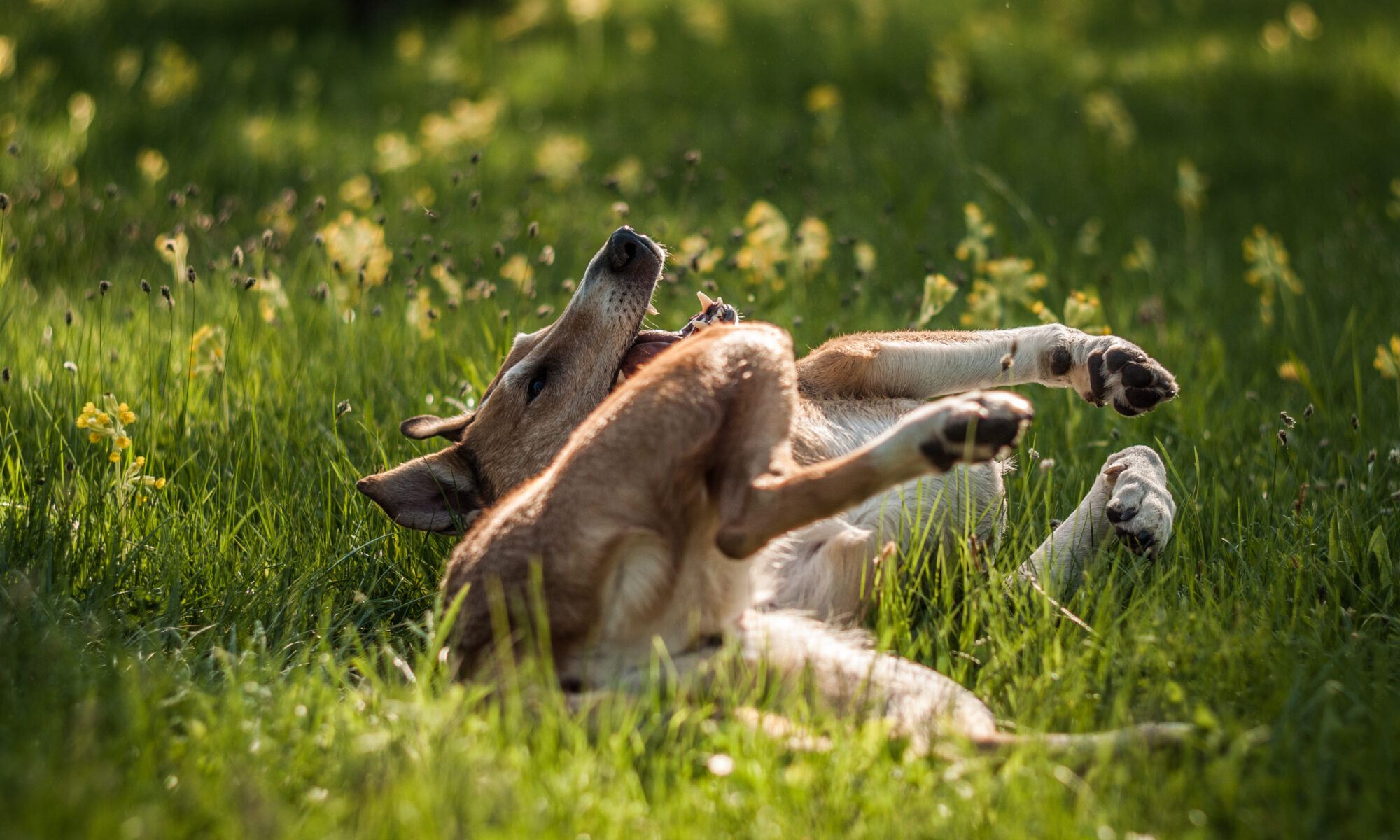In our last blog post we explored the various causes of allergies and itching that your dog may be experiencing. Your dog’s itching can be due to pollen, a food intolerance, use of antibiotics, chemical flea preventatives, high starch and carbohydrate diets, or a combination of factors.
Tip: Many dogs are sensitive to those scented candles you love, air fresheners and fragranced dog shampoos.
________________________________________________________________________
“About 90% to 95% of all dogs will have a skin problem at some point in their lives. At this very moment, about 15% of all dogs are feeling itchy, losing hair, flaking with dandruff, and so on.”
– Dr. Adelia Ritchie, PhD
________________________________________________________________________
Aside from making your dog feel utterly miserable and stressing you out, excessive itching causes skin damage. Through scratching, small abrasions provide a home for bacteria and infections to take hold. It’s very easy for allergies to be the catalyst for infections like Malassezia Dermatitis (Yeast Dermatitis).
Your dog’s microbiome
Malassezia (yeast) is a naturally occurring microorganism that resides in small quantities on your dog’s skin and ears as part of a happy ecosystem. This ecosystem involves lots of different bacteria and yeast on the skin, keeping each other in balance. Other similar ecosystems inside your dog’s body, like the gut, are home to Candida, a yeast that helps digest your dog’s food. These microbiomes can be delicate and need to maintain a perfect balance of good bacteria and yeast to function optimally.
What is a yeast infection?
Humidity, heat, allergies, and a compromised immune system all create the ideal environment for yeast to thrive. Malassezia particularly favours areas such as the ear canal, paws, armpits, tail, belly, backside and skin folds. The overgrowth of Malassezia leads to a rather itchy and uncomfortable yeast infection – Malassezia dermatitis.
Common symptoms of yeast infections include persistent itching, redness, inflamed skin, a ‘yeasty’ corn chip odour, dark discharge from the ear, greasy or flaky skin. Another thing to check for is the presence of tiny dark speckles on your dog’s skin. Breeds with more skin folds such as bulldogs or pugs are particularly susceptible to this type of skin infection.
How do I treat my dog’s yeast infection?
It is essential to look for the root cause of the itching, and not just treat symptoms with medications. Otherwise you are simply putting a bandaid on the problem, without ever resolving it. Consult your vet if you do believe your dog has an undiagnosed infection or disease. It is equally important to consider holistic factors, like gut health and the impact of diet, which are often overlooked.
________________________________________________________________________
“The most common reason for a dog to develop a yeast infection is an unhappy skin or gut biome”
– Dr. Conor Brady, PhD
________________________________________________________________________
Our top tip?
Goodbye kibble, hello raw meat. Switching to a raw diet can be a game-changer when it comes to addressing your dog’s skin issues, allergies, and yeast imbalances. Raw diets rich in high-quality proteins, healthy fats and essential nutrients help promote optimal gut health and strengthen your dog’s immune system.
By eliminating highly processed ingredients, starchy carbohydrates and potential allergens found in commercial kibble, you reduce the risk of triggering reactions. Moreover, a raw diet can help restore the balance of beneficial bacteria in your dog’s microbiomes – crucial for controlling yeast overgrowth. The natural enzymes and probiotics in raw foods can aid in digestion and nutrient absorption, leading to improved overall well-being. Remember – what we see externally is a reflection of what’s going on inside with your dog’s health.
________________________________________________________________________
“Remove all high carbohydrates, chemically preserved dry food and treats from your dog’s life. Give your pet a fresh meat and bone diet, free of carbs/sugar. Do not compromise your dog’s gut flora or immune system with anything else.”
– Dr. Conor Brady, PhD
________________________________________________________________________
The Butcher’s Dog’s Kangaroo and Veg is a novel, single protein, low fat hypoallergenic meal suitable for dogs with suspected food sensitivities, or skin allergies. If your dog has sensitivities to beef or chicken, the Turkey and Veg is another excellent alternative with a more mild flavour.
So much of our dogs’ immune response relies on maintaining a healthy gut microbiome. You can see why we place so much emphasis on your pup’s diet. It is probably the single biggest factor you alone can influence, so they can enjoy a comfortable and itch-free life.
Read more about your dog’s gut in this post here, by Pet Nutritionist Clare Kearney.




























































